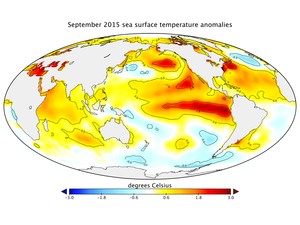- Burger Junior High School
- Unit Resources
- Unit 2: Climate, Insolation, and Seasons
White, Christopher
Page Navigation
- Earth Science Home Page
-
Unit Resources
-
Unit 1: Astronomy
- Eclipse Interactive
- Video - Formation of the Solar System
- Another 3D Solar System
- A Bunch of Good Astronomy Interactives
- Future Eclipses
- Lunar Eclipse Timelapse
- Astronomy Interactive Review
- Earth, Moon and Sun Interactive Review
- Solar System Simulations
- Astronomy Science Trivia
- 3-D Solar System
- 100,000 Stars - A view of nearby stars!
- The Scale of the Universe
- Moon Phase Interactive
- 3-D Model of the Galaxy
- Astronomy Unit Test 1 Review
- Astronomy Unit Test 2 Review
- Unit 2: Climate, Insolation, and Seasons
- Unit 3: Weather
- Unit 4: Rocks and Minerals
- Unit 5: Weathering, Water, and Soil
-
Unit 5: Erosion, Depostion, and Landscapes
- Review Video Selections - Rivers
- Watersheds of the Genesee Region
- Erosion Part 2 Notes
- Erosion Part 2 Practice Questions
- Lab - Examining Landscapes Produced By Glaciers
- Glaciers Interactive
- LAB - Landscapes from Coast to Coast
- REVIEW VIDEO - Landscapes
- GOOGLE EARTH - Viewing Erosion and Deposition
- Erosion Practice with Explanations
- Global Ice Viewer
- EROSION AND DEPOSITION LAB ANIMATIONS
- Meandering River GIF
- Virtual River
- Erosion and Deposition Test Review
- Unit 5: Mapping the Earth
-
Unit 6: Plate Tectonics
- The Development of Plate Tectonics
- Google Earth - Plate Tectonics
- Plate Tectonics Review Videos
- Plate Tectonics Vids
- Interactive Plate Tectonics Review
- Interactive Plate Tectonics Review 2
- Plate Tectonics Animations
- Lab - Sumatra Earthquake and Tsunami
- Virtual Earthquake Enrichment
- Plate Tectonics Test Review
-
Unit 7: Earth's History
- Ancient Life Games
- How To - Carbon Dating
- Virtual Radiocarbon Dating
- Radioactive Dating Games
- Radioactive Dating Enrichment
- Extenstion - Interactive Timeline
- Links
- Earth's History Review Questions
- Earth's History Review Videos
- Other Cool Earth's History Presentations
- 25 Biggest Turning Points in Earth's History
- Visible Geology
- The Scale of Things...
- INVESTIGATION - What Stories Do Rocks Tell?
- Stratigraphy Games
- Rock Correlation Games
-
Unit 1: Astronomy
- Earth Science Review Videos
- Earth Science Review Links
- Study Strategies
- EPOD
- APOD
- Other Earth Science Links

Unit 2 - Climate, Insolation, and Seasons
-
Things for Unit 2 you should UNDERSTAND, KNOW, and be able to DO...Understand:
- Many of the phenomena that we observe on Earth involve interactions among components of air, water and land.
-
What determines the climate of a region.
-
How humans affect climate.
-
How incoming solar radiation, ocean currents, and land masses affect climate.
Know:- Transfer of heat energy within the atmosphere, hydrosphere and land occurs as the result of radiation, convection and conduction.
- Density differences, wind and the Coriolis Effect cause ocean currents.
- There is a direct relationship between the relationship between global wind patterns and dominant ocean currents.
- Six geographic factors that determine a location’s climate are vegetative cover, latitude, orographic effect, proximity to large bodies of water, elevation, ocean currents temperature and precipitation patterns are altered by natural events (El Nino and volcanic eruptions) and human influences (deforestation, desertification, production of greenhouse gasses).
- Common greenhouse gasses affect climate change.
- Angle of insolation determines seasonal changes. These changes include the shifting of global temperature zones, jet stream, precipitation belts, planetary wind patterns, and ocean currents. These changes result in the occurrence of monsoons, hurricanes and other severe climate phenomena.
Vocab Terms: arid, atmosphere, climate, conduction, convection, Coriolis effect, energy transfer, climate change, greenhouse effect, greenhouse gas, convection, radiation, ozone, land breeze, sea breeze, leeward, windward, orographic effect, adiabatic cooling, ocean currents, planetary winds, abundant, depleted, prevailing winds, angle of insolationExtended Vocabulary: doldrums, horse latitudes, monsoon, El Nino, La Nina, halocline, thermocline, deforestation, jet stream, rain shadow, desertificationDo:- Explain the greenhouse effect.
- Interpret and correlate Ocean Currents (ESRT pg. 4) and Planetary Wind and Moisture Belts in the Troposphere (ESRT pg. 14).
- Explain the climate effects of warm and cold ocean currents (El Nino and Gulf Stream).
- Explain the differences between windward and leeward climates.
- Compare and contrast surfaces which absorb or reflect insolation.
- Define insolation and explain how its intensity and duration affects seasonal temperature.
- Explain the relationship between climate and the factors that affect it including simple relationship graphs.
- Determine the effect on climate when given illustrations of natural and human influence.
- Analyze climate data (temperature and precipitation) and relate it to insolation and geographic location.

